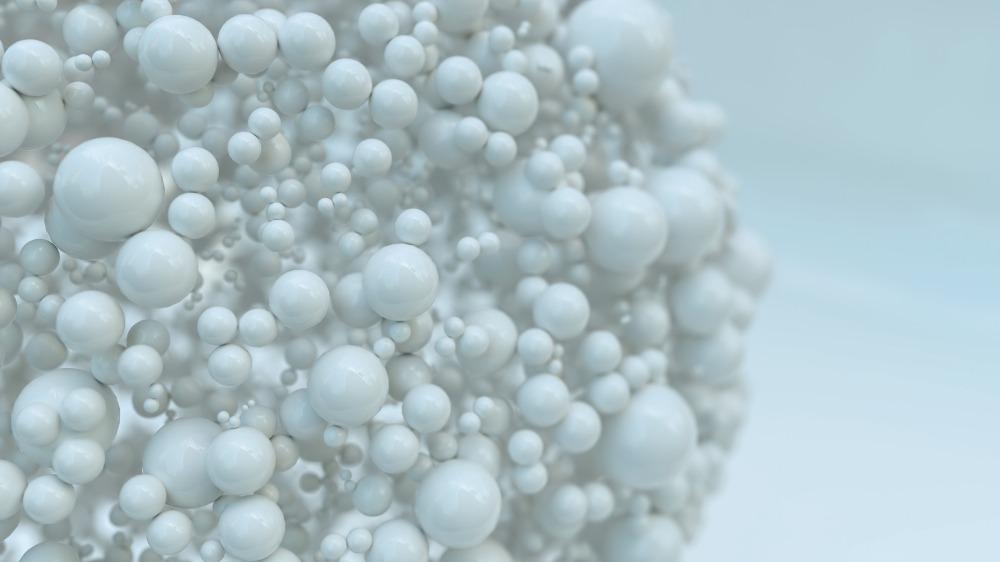A recent work published in the journal ACS Nano demonstrated how high pressure may be utilized to control the electrical characteristics of monolayer transition metal dichalcogenides (TMDs) and to examine KQ crossing and multivalley dispersion using double-resonance Raman (DRR) spectroscopy.

Study: Electronic Band Tuning and Multivalley Raman Scattering in Monolayer Transition Metal Dichalcogenides at High Pressures.
Image Credit: Crevis/Shutterstock.com
Importance of Transition Metal Dichalcogenides (TMDs)
Due to their distinctive electronic configuration and remarkable valley mechanics, semiconducting transition metal dichalcogenides (TMDs) exhibit fascinating features. A valley is an instance of the energy distribution, either a localized low in the conductive band or a localized peak in the valence band. The valley parameter denotes the measure of freedom in the valley that one electron occupies.
Semiconducting TMDs have a direct bandgap in the monolayer range, with the conduction band minima (CBM) and valence band maxima (VBM) forming two valleys. Large spin-orbit coupling (SOC) and weak inverted symmetry combine to bind the spin and degrees of freedom together, resulting in phenomena such as the Hall effect and Zeeman effect.
Using Pressure to Enhance Multivalley Physics in TMDs
The enormous energy gap between the CBM at K and Q-points (ΔEKQ) frequently obscures the influence of multivalley mechanics in monolayer TMDs. To interpret complex multivalley mechanics in monolayer TMDs, it is advantageous to diminish ΔEKQ using an exterior variable such as stress or pressure while exploring valley changes and multivalley scattering events.
Previously, high-pressure photoluminescence (PL) investigations revealed a decrease in ΔEKQ, resulting in an ultimate KQ crossover in monolayer TMD. PL, however, is not a suitable assay of band crossover in pressured TMDs. Moreover, PL readings cannot directly investigate multivalley dispersion mechanisms.
Double Resonance Raman (DRR) Scattering: An Effective Probing Tool
DRR scattering is an extremely sensitive probe of the electrical configuration and intervalley dispersion mechanisms in two-dimensional materials, as shown previously for graphene and monolayer molybdenum disulfide (MoS2). DRR scattering is also responsive to band configuration changes in two-dimensional substances, allowing for the detection of loading activities, defect levels, and strain.
The researchers pressed monolayer molybdenum disulfide (MoS2) and tungsten diselenide (WSe2) at elevated pressure and low temperatures to investigate K-Q crossover multivalley dispersion through DRR scattering. Pressure-induced amplification of the double-resonance LA and 2LA Raman bands was observed in both situations.
Key Findings of the Study
The amplification of the double-resonance LA and 2LA Raman bands may be ascribed to the stress-induced impacts of a crossing between the K and Q valleys and a blueshift of the B excited state energy bringing it closer to the laser excitation intensity. First-principles computations and PL observations also supported these conclusions.
Because of the substantial energy imbalance between the K- and Q-band minimum, the impact of the KQ dispersion mechanism on the 2LA and LA Raman-bands for single-layer MoS2 and WSe2 is often modest under atmospheric conditions. However, when the gap between K and Q valleys becomes relatively closer, the influence of K-Q dispersion on the intensity of the DRR activities becomes highly amplified. High pressure lowers the energy gap between the K and Q valleys in TMDs, eventually resulting in a K-Q crossover.
Future Perspective of Electrical Characteristics of TMDs
These findings support the use of DRR spectrometry and the 2LA band as a precise sensor of the influence of pressure on the electrical characteristics of TMDs. Because of the parallels in their band structures, the analysis conducted for MoS2 and WSe2 is anticipated to be generalized to other conductive monolayers TMDs.
Although seen at elevated pressures in this study, the phenomenon of bandgap opening (closing) and reduction (increase) in ΔEKQ can be projected for biaxial tensile stress in monolayer TMDs. As a result, the strength and form of the 2LA and LA bands can be exploited to detect tension or compression in TMDs.
Moreover, this study might open the way for future research on the multivalley phenomenon in TMDs. This largely untapped field can be examined with the help of strain engineering for foundational research and industrial uses.
Reference
Martins, L. G. et al. (2022). Electronic Band Tuning and Multivalley Raman Scattering in Monolayer Transition Metal Dichalcogenides at High Pressures. ACS Nano. Available at: https://pubs.acs.org/doi/10.1021/acsnano.2c01065
Disclaimer: The views expressed here are those of the author expressed in their private capacity and do not necessarily represent the views of AZoM.com Limited T/A AZoNetwork the owner and operator of this website. This disclaimer forms part of the Terms and conditions of use of this website.